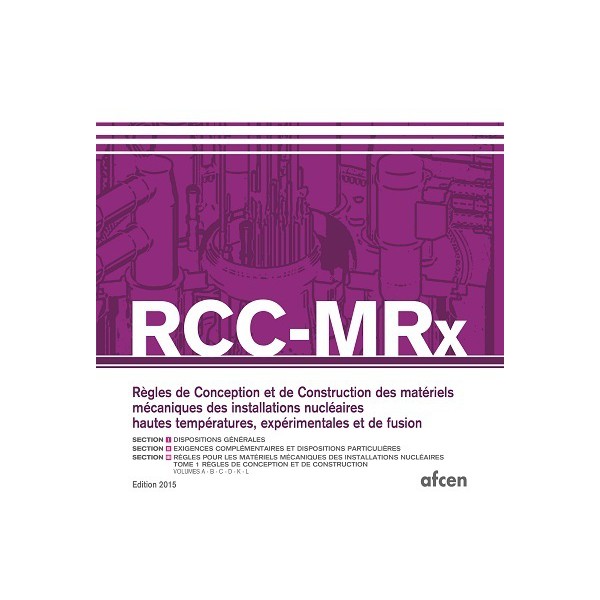RCC-MRx 2015
Reference: AFC35
Design and Construction Rules for mechanical components of nuclear installations : high-temperature, research and fusion reactors


Purpose and scope
The RCC-MRx code was developed for sodium-cooled fast reactors (SFR), research reactors (RR) and fusion reactors (FR-ITER).
It describes the rules for designing and building mechanical components involved in areas subject to significant creep and/or significant irradiation. In particular, it incorporates an extensive range of materials (aluminium and zirconium alloys in response to the need for transparency to neutrons), sizing rules for thin shells and box structures, and new modern welding processes: electron beam, laser beam, diffusion and brazing.
A new edition of the RCC-MRx code was released in 2015. This edition reflects feedback on the use of the 2012 edition and/or its 2013 addendum, especially in current projects and mainly the Jules Horowitz reactor and the Astrid project. Examples include the inspection and welding procedures for aluminum, as well as the code’s improvements and new structure relating to components used at high temperatures (design rules, welded assemblies and material properties). Initial feedback on the code’s application also helped analyze and integrate additional data on the Eurofer material used by the fusion community.
Furthermore, this edition pays special attention to ensuring consistency between RCC-MRx and the other reference documents that interact with the code, including RCCM, European and international standards.
For more details about RCC-MRx
Erratas of the RCC-MRx code have been published, follow this link: Errata of RCC-MRx code.

Take part in updating the codes
If you would like to modify a code, you can send your proposal to the relevant code subcommittee: download and complete the application form, then send the form to the subcommittee email address.
If you would like to understand the interpretation of a paragraph of the code: download the application form, enter your question and send the form to the email address of the relevant subcommittee.
If you want to benefit the nuclear industry from your feedback as a code user, share your expertise with AFCEN: download and complete the application form, then send it to the email address of the relevant subcommittee.





